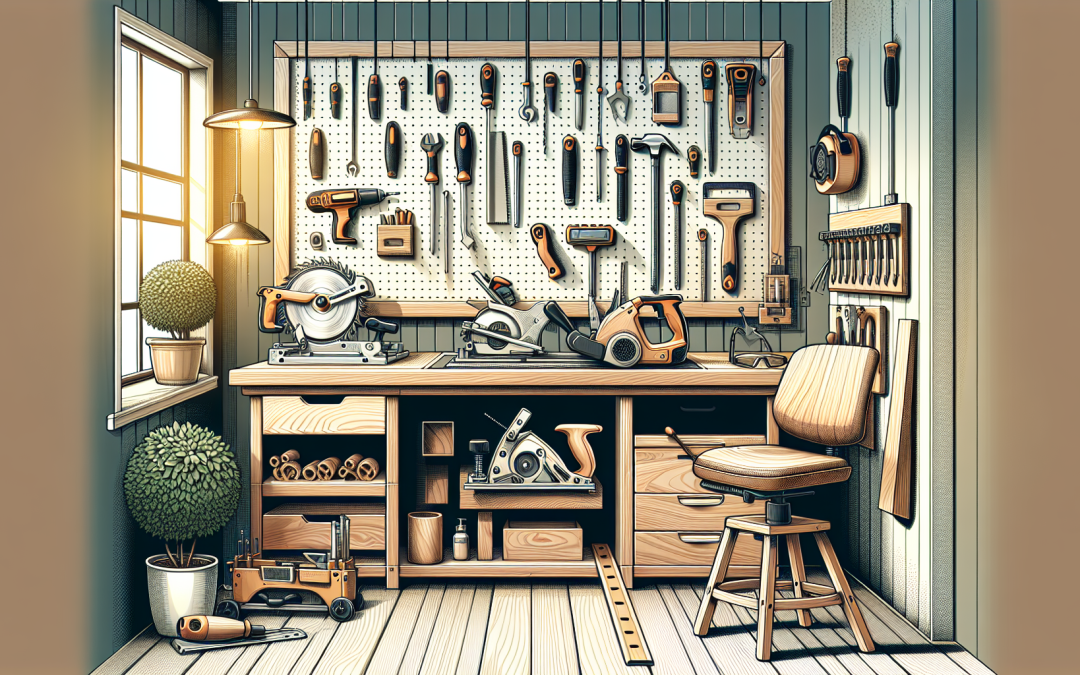Woodworking is a thoughtful balance between artistry and accuracy. An under-recognized, but vital aspect of this balance, is ergonomic practices that can significantly enhance both safety and efficiency in your woodworking venture. Let’s delve into how incorporating ergonomics into your woodworking practice can help you unify creativity with functionality.
Ergonomics: The Secret Ingredient for Efficient Woodworking
Being mindful of ergonomics in your workspace is crucial. Ergonomics relate to the relationship between workers and their environment. In woodworking, it includes elements such as the layout of your workshop and the design of your tools and equipment. This concept plays a major role in ensuring both safety and efficiency in your practice. A well-organized workshop lends itself to smoother workflows, where every tool is within easy reach, and all equipment is optimally placed, ensuring less physical strain and more productivity. By referring to our expert guide on constructing a practical [yet elegant workbench](http://www.woodworkingmasterclass.com/functional-compact-woodworking-workbench/), you will get a comprehensive overview to kickstart your ergonomic journey.
Craftsmanship with Comfort: Essential Woodworking Tools
One of the most vital aspects often overlooked when it comes to ergonomics is the selection of tools. Every craftsman, beginner or veteran, needs a repertoire of [essential woodworking tools](http://www.woodworkingmasterclass.com/essential-woodworking-tools-every-beginner-must-own/). Choosing tools that are not only functionally adequate but also ergonomically superior can significantly improve your overall woodworking experience. Tools with soft grips, adjustable handles, and lighter weights can reduce the strain on your hands and enhance your precision—vital attributes for creating intricate designs, such as those involved in [wooden toy crafting](http://www.woodworkingmasterclass.com/beginners-guide-wooden-toy-crafting/).
Understanding Your Material: The Foundation Step
While tools form an important aspect, understanding the material you work with is equally essential. Each type of wood has unique properties, including its moisture content, grain, hardness, and workability. [Understanding different types of wood](http://www.woodworkingmasterclass.com/understanding-different-types-of-wood-for-your-projects/) can aid in selecting the right material for each project, adapting your techniques to the wood’s properties, and mitigating potential complications from wood movement. This knowledge opens the doors to more complex projects, such as [wood bending](http://www.woodworkingmasterclass.com/advanced-wood-bending-techniques/), which involve manipulating the wood’s innate properties for your creative purpose.
Mastering Techniques: Precision Over Power
Muscling your way through wood may seem tempting but is seldom efficient. Sharpen your skills and save your strength by mastering precise cutting techniques. Tight control and accurate placement can ensure cleaner cuts while reducing the risk of accidents. Dig into this motivational guide to [master the art of precision cuts](http://www.woodworkingmasterclass.com/master-the-art-of-precision-cuts-tips-from-the-pros/) from professionals, for cleaner lines and seamless joins in your woodworking projects.
Blending Old and New: In Harmony with Your Craft
A blend of traditional methods with modern techniques can be the key to unlock your woodworking potential. [Step-by-step tutorials](http://www.woodworkingmasterclass.com/skill-building-tutorials-are-becoming-popular-all-over-the-world/) are growing in popularity as they bridge this gap, offering clear, actionable guidance to enhance your skills. From understanding the age-old techniques of wood carving to utilizing the latest tools for precision, harmonizing the old with the new can enhance your woodworking practice. To successfully realize this blend, a firm grasp over [common woodworking mistakes](http://www.woodworkingmasterclass.com/common-woodworking-mistakes-how-to-avoid-them/) and their avoidance is pivotal.
Ergonomics is more than a buzzword—it’s a cornerstone for creating a safe, efficient, and enjoyable woodcrafting experience. By optimizing your workspace, carefully selecting your tools, understanding your material, and honing your skills, you can elevate your craftsmanship to new heights. A well-designed ergonomic setup doesn’t just facilitate creativity—it enhances it, opening up new possibilities for you to explore in your woodworking journey.

